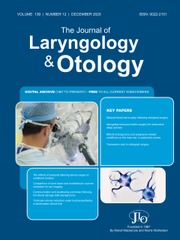No CrossRef data available.
Article contents
Validation of the subgroup classification system for vestibular dysfunctions in clinical decision making
Published online by Cambridge University Press: 23 September 2025
Abstract
To validate a subgroup classification tool designed to support clinical decision-making in vestibular physiotherapy.
A structured instrument was developed based on the main vestibular disorders commonly treated by physiotherapists. The tool was applied by professionals to simulated clinical cases. Content validation was performed by expert judges using the Delphi technique. The Content Validity Index was calculated for each item.
The tool obtained a Content Validity Index of 0.78 or more across all domains in the first round and reached 100 per cent agreement among experts in the second round, confirming its content validity. The tool demonstrated clarity, coherence and clinical relevance for decision-making in vestibular rehabilitation.
The validated tool presents evidence of content validity and clinical applicability, offering support for physiotherapists in the classification and management of vestibular disorders.
Keywords
Information
- Type
- Main Article
- Information
- Copyright
- © The Author(s), 2025. Published by Cambridge University Press on behalf of J.L.O. (1984) LIMITED.
Footnotes
Luana Ribeiro Altrão Iorino takes responsibility for the integrity of the content of the paper.

